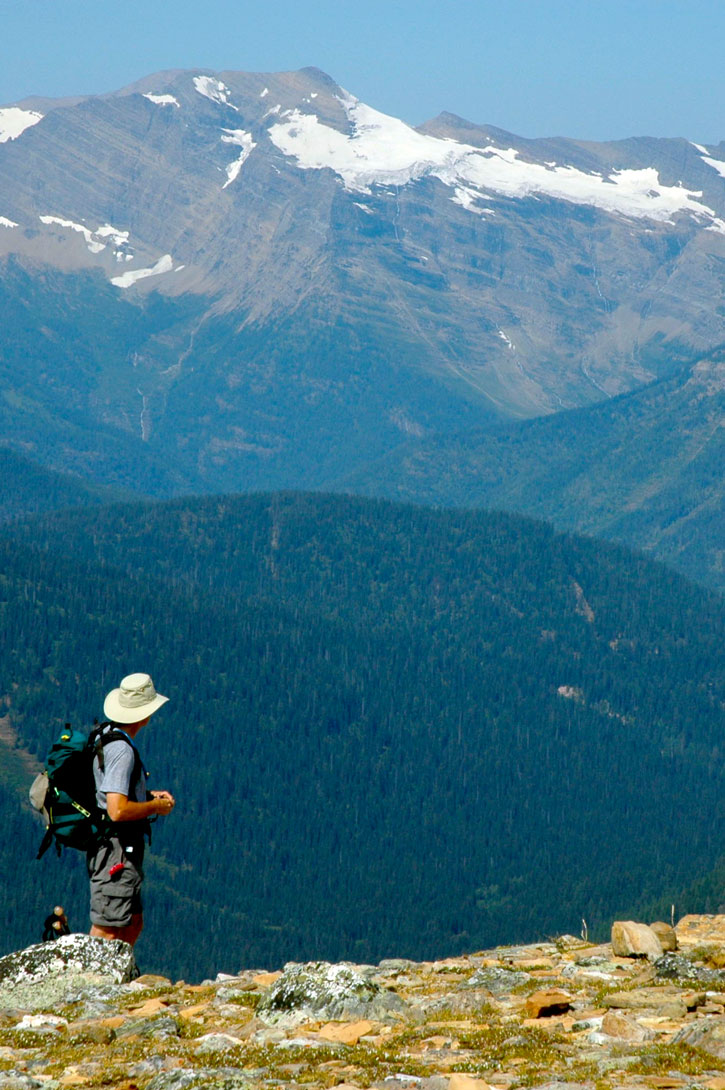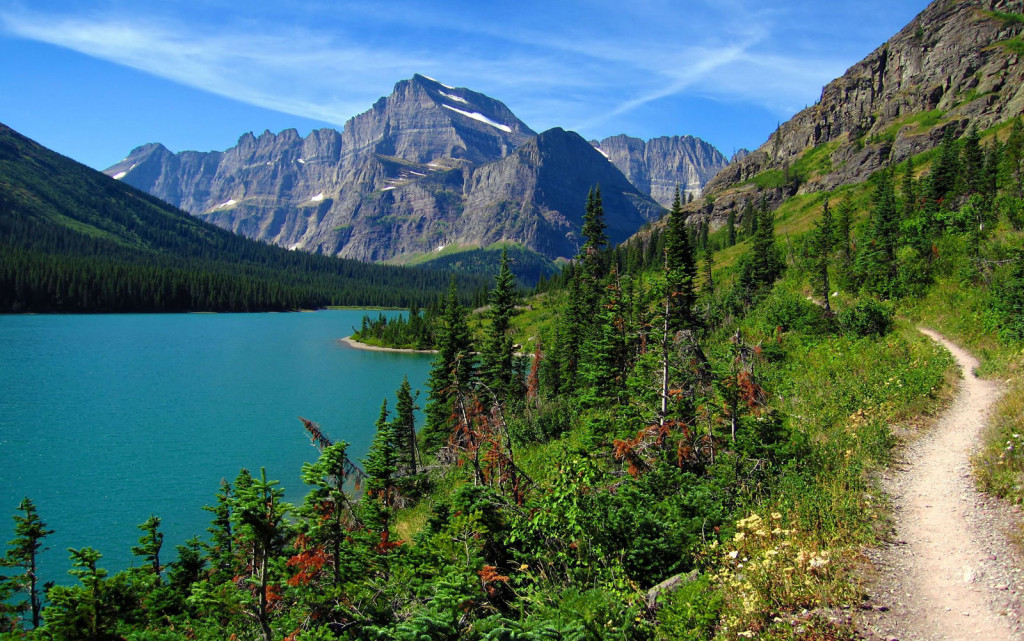Extra food and water: Depending on the hike’s length, take a lunch and snacks, like compact high-energy food bars. Low-odor foods will not attract animals. Always carry extra water: Heat, wind, and elevation lead quickly to dehydration, and most visitors find they drink more than they do at home. Avoid drinking directly from streams or lakes. Due to the possibility of giardia and illness-inducing bacteria, always filter or treat water sources before drinking.

Dawson Pass, one of three passes crossed by the Dawson-Pitamakin Loop. Photo © Becky Lomax.
Map and compass or GPS device: Although Glacier’s trails are extremely well signed, a map can be handy for ascertaining distance traveled and location. A compass or GPS device will also help, but only if you know how to use it. In deep, heavily forested valleys, a GPS receiver may not pick up the satellites.
Flashlight: Carry a small flashlight or headlamp for after-dark emergencies. Take extra batteries too.
First-aid kit: Two bandages may not be enough. Carry a fully equipped standard first-aid kit with blister remedies. Many outdoor stores sell suitably prepared kits for hiking. Don’t forget to add personal items like bee-sting kits and allergy medications.
Sun protection: Altitude, snow, ice, and lakes all increase ultraviolet radiation. Protect yourself with SPF 30 sunscreen, sunglasses, and a sun hat or baseball cap.
Emergency toilet supplies: Not every hike conveniently places a pit toilet at its destination. To accommodate an alfresco toilet stop, carry a small trowel, plastic baggies, and toilet paper, and move at least 200 feet away from water sources. For urinating, aim for a durable surface, such as rocks, logs, gravel, or snow. “Watering” fragile plants, campsites, or trails attracts mineral-starved animals that dig up the area. Bury feces 6-8 inches deep in soil. Do not bury toilet paper; use a baggie to pack it out.
Menstrual hygiene: Carry heavy-duty zippered baggies and pack out tampons, pads, and everything else.

View of Lake Josephine from Grinnell Glacier Trail. Photo © Rick Laverty/123rf.
Insect repellent: Summer can be abuzz at any elevation with mosquitoes and blackflies. Insect repellents that contain 50 percent DEET work best. Purchase applications that rub or spray at close range rather than aerosols that go airborne onto other people, plants, and animals.
Pepper spray: If you want to carry pepper spray, purchase an eight-ounce can, as nothing smaller will be effective; however, do not bother unless you know how to use it and what influences its effectiveness. Do not use it like bug repellent.
Miscellaneous: A knife may come in handy, as can a few feet of nylon cord and a bit of duct tape (wrap a few feet around something small like a flashlight handle or water bottle). Many hikers have repaired boots and packs with duct tape and a little ingenuity.
Excerpted from the Fifth Edition of Moon Glacier National Park.